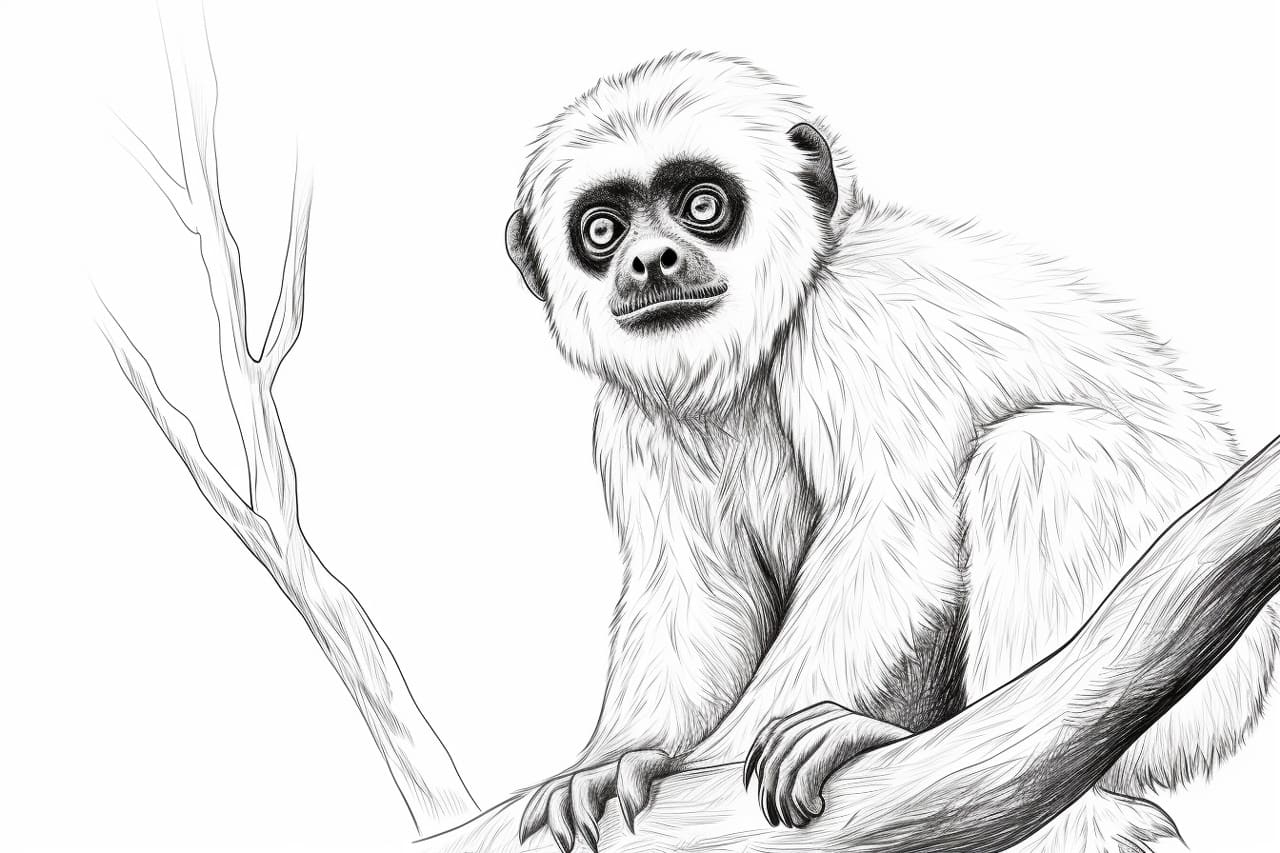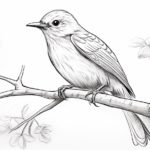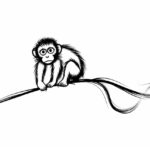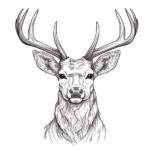Drawing Gibbons can be a rewarding and fascinating experience for any artist. These graceful and agile primates are known for their long arms, expressive faces, and playful nature, making them a captivating subject to capture on paper. In this guide, we will explore the unique characteristics of Gibbons and provide tips and techniques to help you create a stunning and lifelike representation of these incredible creatures through drawing. So grab your pencils and paper, and let’s delve into the world of Gibbon artistry!
Materials Required
To draw a Gibbon, you will need the following materials:
- Drawing paper or sketchbook
- Pencils (preferably a range of graphite pencils from 2H to 6B)
- Eraser (kneaded eraser and/or white plastic eraser)
- Blending stump or tortillon for shading and blending
- Reference photo of a Gibbon for accuracy
- Optional: Colored pencils or markers for adding color to your drawing, especially if you want to create a more detailed and colorful piece.:
How to Draw a Gibbon: a Step-by-step Guide
Step 1: Gather Your Materials
- Prepare a sheet of drawing paper or a sketchbook
- Have a set of drawing pencils (HB, 2B, 4B) or mechanical pencils
- Get an eraser
- Optionally, have colored pencils or markers for coloring
Step 2: Reference Image
- Find a clear reference image of a Gibbon to guide your drawing
- Study the anatomy and proportions of the Gibbon in the reference image
Step 3: Sketching the Basic Shapes
- Start by lightly sketching a circle for the head and an oval for the body
- Add two smaller ovals for the arms and two larger ovals for the legs
- Connect the shapes to create a basic framework for the Gibbon’s body
Step 4: Adding Details to the Face
- Sketch the facial features including the eyes, nose, and mouth
- Add the ears on the sides of the head
- Detail the face with fur texture and any markings
Step 5: Drawing the Limbs and Tail
- Refine the shape of the arms and legs, adding muscle definition
- Include the hands and feet with fingers and toes
- Extend a long tail from the back of the Gibbon’s body
Step 6: Fur and Texture
- Add fur texture to the Gibbon’s body using short, quick strokes
- Pay attention to the direction of the fur growth to create a realistic look
- Shade areas where shadows fall to give dimension to the drawing
Step 7: Final Details
- Refine the features of the Gibbon, such as adding fur details, facial expressions, and any distinctive markings
- Erase any unnecessary guidelines and clean up the drawing
- Consider adding a background or additional elements to enhance the composition
Step 8: Optional Coloring
- If desired, use colored pencils or markers to add color to your Gibbon drawing
- Start with a base color and layer different shades to create depth and dimension
- Blend colors smoothly and consider using reference images for accurate coloring
Step 9: Final Touches
- Review your drawing and make any necessary adjustments
- Sign your artwork and date it to complete the drawing process
- Share your Gibbon drawing with others and seek feedback for improvement
Step 10: Practice and Experiment
- Practice drawing Gibbons regularly to improve your skills
- Experiment with different styles, techniques, and mediums to enhance your artwork
- Have fun and enjoy the process of creating Gibbon drawings!
Conclusion
Great job on completing your drawing of the Gibbon! Your attention to detail and use of shading really bring the piece to life. Remember, art is a journey and each piece you create is an opportunity to learn and grow. Keep practicing, experimenting with different techniques, and challenging yourself. Your dedication and passion for art will continue to shine through in your work. Keep up the fantastic work and never stop creating!
Fun Facts About Gibbons
- Gibbons are known for their incredible agility and acrobatic abilities. They are capable of swinging from branch to branch with ease, using their long arms to propel themselves through the trees.
- Gibbons are known for their loud and melodious calls, which can be heard from up to 2 miles away in the dense rainforest. These calls are used to establish territories, attract mates, and communicate with other members of their group.
- Gibbons are monogamous animals, forming strong bonds with their mate that can last a lifetime. They are also highly social animals, often living in small family groups consisting of a mated pair and their offspring.
- Gibbons are among the most endangered primates in the world, with many species facing threats such as habitat loss, poaching, and the illegal pet trade. Conservation efforts are underway to protect these fascinating creatures and their habitats.
- Gibbons are considered to be the fastest and most agile of all tree-dwelling, non-flying mammals. They are capable of reaching speeds of up to 35 miles per hour when swinging through the trees.
- Gibbons have a unique form of locomotion known as brachiation, where they swing from branch to branch using their arms. This method of movement allows them to travel quickly and efficiently through the forest canopy.
- Gibbons have a specialized diet that consists mainly of fruits, leaves, and insects. They are important seed dispersers in their forest habitats, helping to maintain the health and diversity of the ecosystem.
- Gibbons have a highly developed sense of hearing, which allows them to communicate effectively with other members of their group. They are known to have a complex vocal repertoire, with different calls for different social situations.
- Gibbons are known for their strong family bonds, with parents playing an important role in caring for and raising their offspring. Young gibbons learn essential skills from their parents, such as how to find food and navigate their
Suggestions for Scenes and Settings for Gibbon Drawings
Certainly! Here are some specific suggestions for scenes and settings for drawings of Gibbons:
- Gibbon swinging through the lush canopy of a tropical rainforest.
- Gibbon grooming another gibbon while sitting on a tree branch.
- Gibbon leaping from tree to tree in a dense jungle setting.
- Gibbon perched on a branch, with a waterfall in the background.
- Gibbon feeding on ripe fruits in a sun-dappled clearing.
- Gibbon interacting with other wildlife, such as birds or butterflies, in a serene forest setting.
- Gibbon hanging upside down from a tree branch, playfully interacting with its tail.
- Gibbon with its baby clinging to its chest, in a heartwarming family scene.
- Gibbon calling out with its distinctive vocalizations, surrounded by colorful flowers.
- Gibbon lounging on a tree branch, enjoying the warmth of the sun filtering through the leaves.









